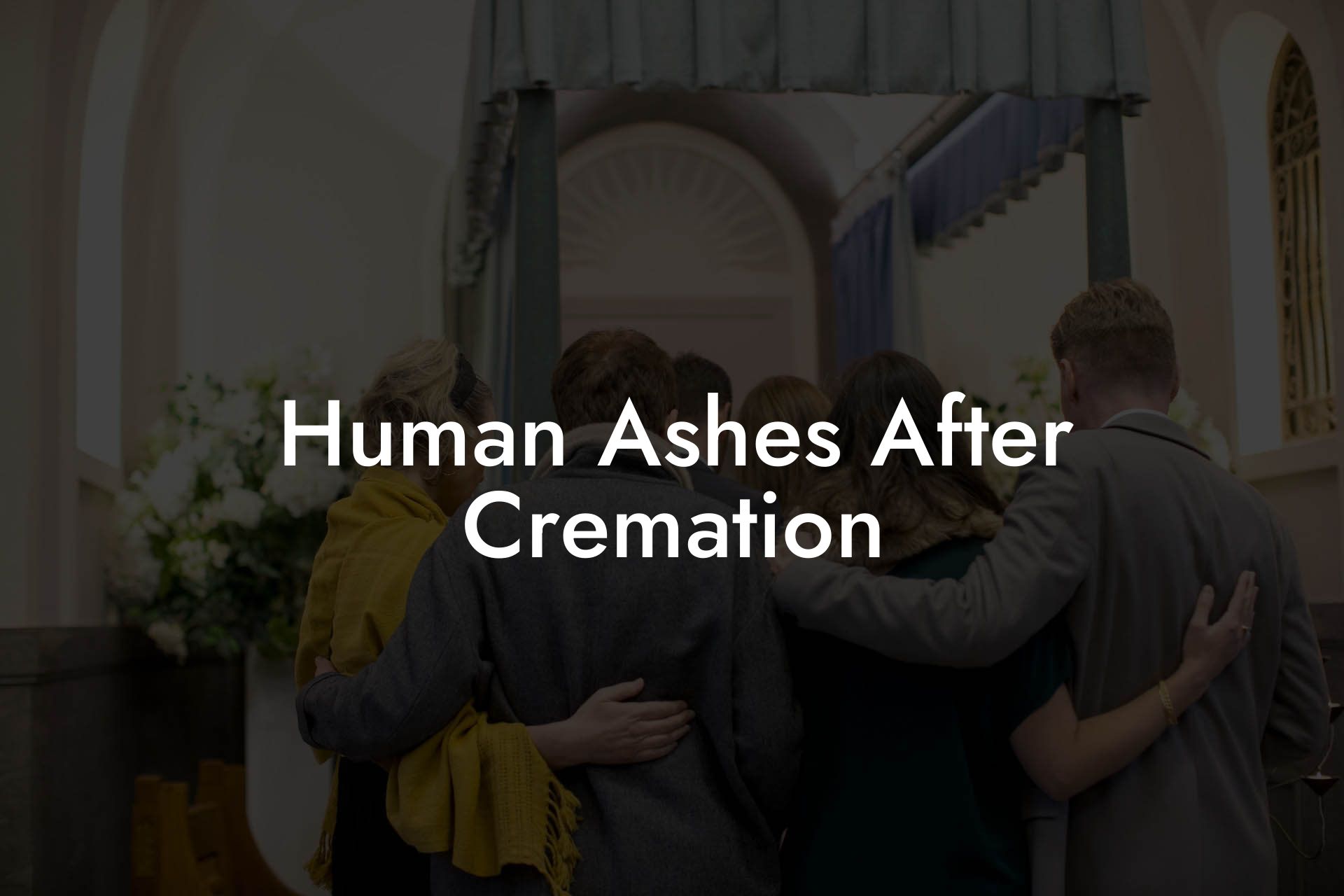Imagine the freedom to scatter your loved one's ashes in a majestic mountain range, or to keep them close in a beautiful urn that tells their story. Cremation has become an increasingly popular choice for many, but what happens to human ashes after the cremation process? In this comprehensive guide, we'll delve into the world of cremation, exploring the journey of human ashes from the crematorium to their final resting place.
Quick Links to Useful Sections
What Happens During the Cremation Process?
Before we dive into what happens to human ashes after cremation, let's take a step back and understand the cremation process itself. Cremation involves the use of high-temperature flames to reduce a deceased person's body to its basic elements, leaving behind a residue of ashes and bone fragments.
The process typically takes around 1-2 hours, with the body being placed in a cremation chamber where the temperature reaches up to 1800°F (980°C). The intense heat breaks down the body, leaving behind a sterile, odorless, and dry residue.
The Process of Ashes Collection and Preparation
After the cremation process, the ashes are collected and processed into a finer powder, known as cremated remains or cremains. This is done to make the ashes easier to handle and store.
The processing typically involves the following steps:
- Removal of metal fragments, such as surgical implants or jewelry, which are recycled or disposed of according to local regulations.
- Pulverization of the ashes into a fine powder using a machine specifically designed for this purpose.
- Sifting and sorting of the ashes to remove any large bone fragments or other debris.
The resulting ashes are then placed in a container, known as an urn, which can be made of various materials, such as metal, wood, or ceramic.
What Do Human Ashes Look Like?
Human ashes are typically a grayish-white color, resembling coarse sand or small pebbles. The texture can vary depending on the individual's bone density and the cremation process used.
The ashes are usually around 3-7 pounds (1.4-3.2 kilograms) in weight, with an average volume of about 200 cubic inches (3.2 liters). This can vary depending on the size and weight of the individual.
Options for Disposition of Ashes
Once the ashes are prepared, the family or individual responsible for the deceased can choose from various options for their disposition. These include:
- Burial: Ashes can be buried in a cemetery, often in a designated cremation garden or columbarium.
- Scattering: Ashes can be scattered in a special location, such as a mountain, ocean, or park, with or without a ceremony.
- Keeping at Home: Ashes can be kept in an urn at home, often in a special place or memorial area.
- Divided Among Family: Ashes can be divided among family members, allowing each person to keep a portion of their loved one close.
These options can be tailored to the individual's wishes, cultural traditions, and personal preferences.
Environmental Impact of Ashes Disposition
As the popularity of cremation grows, so does the concern about the environmental impact of ashes disposition. Scattering ashes in natural environments can have unintended consequences, such as:
- Disrupting local ecosystems and wildlife habitats.
- Contaminating soil and water sources with heavy metals and other pollutants.
To mitigate these effects, many people opt for eco-friendly urns and scattering methods, such as biodegradable urns or sea burials.
Resources and Community Support: Your Next Steps
Losing a loved one can be a challenging and emotional experience. If you're considering cremation or have already gone through the process, it's essential to have a support system in place.
Reach out to local bereavement groups, online forums, or counseling services for guidance and connection. Additionally, consider consulting with a funeral home or cremation provider to explore your options and create a personalized plan.
Frequently Asked Questions: Human Ashes After Cremation
Here are some frequently asked questions about human ashes after cremation:
1. What is the composition of human ashes?
Human ashes are primarily composed of bone fragments, with small amounts of other elements, such as calcium, phosphorus, and sodium.
2. Can I scatter ashes in any location?
While there are no federal laws regulating ash scattering, local regulations and permits may apply. Always check with local authorities before scattering ashes.
3. How long do ashes remain identifiable?
Ashes typically remain identifiable for several years, depending on environmental factors and the type of urn used.
4. Can I divide ashes among family members?
Yes, ashes can be divided among family members, allowing each person to keep a portion of their loved one close.

